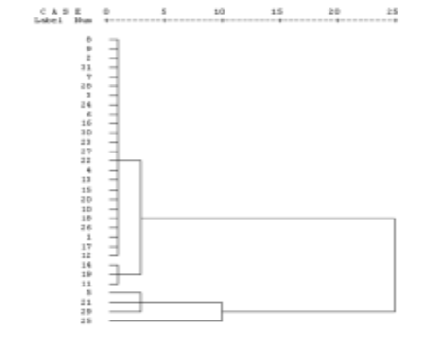


Indian Journal of Science and Technology
DOI: 10.17485/IJST/v15i46.1519
Year: 2022, Volume: 15, Issue: 46, Pages: 2515-2526
Original Article
Mayank Kumar Singh1*, N Anbazhahan2, B Gowtham3
1Ph.D. Scholar, Department of Geography, Presidency College, Chennai, 600005, Tamil Nadu, India
2Assistant Professor, Department of Geography, Presidency College, Chennai, 600005, Tamil Nadu, India
3Assistant Professor, Department of Geology, Presidency College, Chennai, 600005, Tamil Nadu, India
*Corresponding Author
Email: [email protected]
Received Date:21 July 2022, Accepted Date:31 October 2022, Published Date:09 December 2022
Objectives: The current study shows the magnitude of changes in land use and land cover (LULC) in the Ambattur Zone from 1990 to 2021 and examines its impact on groundwater quality through the Gibbs diagram, Piper diagram, multivariate statistical analysis, and water quality index (WQI) for drinking. Methods: Landsat images were collected to derive the LULC images through the supervised classification approach. Groundwater samples were collected from 31 wells for two seasons and analyzed for the hydrogeochemical study. Gibbs, Piper, multivariate statistical analysis and WQI were done to evaluate the groundwater quality for drinking purpose and to study the hydrogeochemical characteristics. Findings: The results show that barren land decreased from 7.4 to 4.31 km2, whereas, built-up land expanded from 21.37 to 24 km2. Compared to barren and built-up regions, water and vegetation land haven’t changed much. LULC change analysis required assessing Ambattur groundwater quality. Physico-chemical investigations and ionic concentrations show that Ambattur industrial zone groundwater is contaminated and unsafe for human consumption. WQI shows that 60% of groundwater is unfit in both seasons. Evaporation and rock-water interaction alter the area’s groundwater chemistry. Hydrogeochemical facies diagrams show alternating alkaline and alkali dominance, as well as strong and weak acids. According to correlation matrices, all analytical parameters except pH have a positive correlation. Four basic components and a cluster contribute to understanding industrial pollution. Novelty: (i) The present study integrates LULC changes and hydrogeochemistry for the evaluation of groundwater quality. (ii) The comprehensive approach of analyzing LULC changes in conjunction with evaluating the groundwater geochemistry gives new insights in groundwater management for the long-term development of any region.
Keywords: Landsat; Supervised classification; LULC changes; Hydrogeochemistry; WQI; Multivariate statistics
© 2022 Singh et al. This is an open-access article distributed under the terms of the Creative Commons Attribution License, which permits unrestricted use, distribution, and reproduction in any medium, provided the original author and source are credited. Published By Indian Society for Education and Environment (iSee)
Subscribe now for latest articles and news.